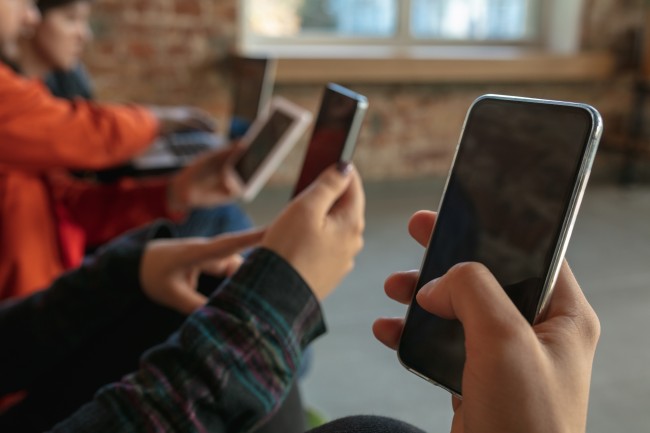There’s no denying it anymore — mobile phones sit at the heart of modern civilization. From boardrooms to backstreets, from lecture halls to living rooms, that small rectangle runs daily life.
What started as a communication tool now functions as a personal assistant, an entertainment hub, a mini-bank, and a constant companion. Yet the same power that connects the planet also chips away at attention, privacy, and peace of mind.
Below is a closer look at the top advantages and disadvantages of mobile phones, written not as praise or warning but as observation — the fine print of a technology that changed the rhythm of living.
Advantages of Mobile Phones
1. Instant Communication and Global Reach
Communication defines humanity, and mobile phones turned it into lightning. Calls no longer wait for landlines; video chats collapse borders. One tap, and a person sitting in Dublin can speak face-to-face with a colleague in Singapore or a family member in Toronto.
Organizations thrive on that immediacy. Deals close faster. Remote collaborations feel local. Families scattered across continents hold virtual dinners and birthdays through glowing screens.
But there’s a subtle cost. Every vibration signals urgency. Every unread message whispers anxiety. The very speed that binds the world also exhausts it. Still, communication without delay remains one of humanity’s biggest leaps — all powered by a palm-sized device.
2. Unlimited Access to Information
Mobile phones have democratized curiosity. With a few taps, entire libraries, archives, and research papers unfold on a four-inch screen. Students study through apps; engineers browse design documents on trains; traders check global indices between flights.
The reach of knowledge no longer depends on geography or wealth. A villager with a smartphone holds access equal to an urban scholar with a laptop. That shift is nothing short of revolutionary.
Yet, the avalanche of data carries a hazard. Too much information flattens depth. Attention spans shorten, and truth becomes just another headline. The phone opens the door to wisdom — but also to distraction disguised as learning.
3. Mobile Commerce and Digital Transactions
The mobile phone isn’t just a device anymore; it’s a digital wallet, a marketplace, a financial advisor, and sometimes even a cash register. E-commerce apps have blurred the distinction between window shopping and instant purchase.
Banking evolved alongside. Funds move between continents within seconds. People pay bills, invest, or even secure loans through mobile interfaces. In developing economies, this single innovation brought millions into formal finance.
Yet convenience attracts predators. Scammers create fake links that mimic trusted platforms. Digital fraud grows as fast as innovation. The system remains brilliant — but fragile. One careless click may cost more than a purchase.
4. The Camera Revolution
When cameras entered phones, photography stopped being a luxury. Every user became a chronicler of life — capturing sunsets, meals, and milestones. Journalism transformed too. Events unfold live through handheld lenses long before news outlets arrive.
Visual storytelling now drives the internet economy. From influencers to advertisers, imagery rules. Editing tools once limited to professionals now sit in free mobile apps. Creativity escaped the studio.
However, perfection came with pressure. Lives began to look filtered, carefully staged. The pursuit of “likes” often overshadows the joy of real memory. Mobile cameras gave the world eyes everywhere but blurred the line between authenticity and performance.
5. Entertainment and Escapism
A phone can turn monotony into entertainment within seconds. Commuters stream shows, gamers build virtual worlds, and millions scroll through endless feeds seeking amusement or comfort. Music, cinema, news, and memes — all flow through one screen.
Entertainment once belonged to televisions or theatres; now it lives in palms. This accessibility softened stress and made art more reachable than ever. Yet the same magic also devours hours silently.
Constant stimulation breeds restlessness. Silence feels foreign. Human minds, once content with pauses, now panic without pings. Entertainment, in excess, turns from escape to enslavement.
6. Navigation and Location Awareness
Maps have evolved beyond direction — they’ve become assurance. GPS-driven apps guide drivers, hikers, and travelers with real-time precision. Lostness, once part of adventure, nearly vanished.
From locating restaurants to finding lost phones, location data has turned into currency. During emergencies, this feature saves lives. Families share live locations, and rescue operations track missing individuals through last-known signals.
But that same precision shadows privacy. Many forget that every route, every stop, every photo carries geodata. Convenience quietly feeds surveillance. In trading safety for ease, personal space becomes negotiable.
7. Work on the Go and Remote Productivity
Work no longer lives inside buildings. Smartphones made offices portable — a double-edged miracle. Professionals attend meetings mid-flight, approve documents from taxis, and manage projects while standing in supermarket queues.
Applications like Slack, Teams, or Trello have built economies around mobile collaboration. Business agility rose sharply as geography lost relevance. Remote culture, once a novelty, became the new normal.
However, the same device that powers productivity also erases rest. Boundaries fade. The 9-to-5 schedule dissolves into constant availability. The reward of flexibility quietly morphs into digital fatigue. The modern phone doesn’t just ring; it demands.
8. Health Tracking and Medical Access
In recent years, mobile phones have merged with wellness technology. Step counters, calorie trackers, sleep monitors — all watch the body while people barely notice. Health apps schedule reminders, telemedicine connects patients to doctors, and smartwatches sync data in real-time.
This innovation reshaped preventive care. Early alerts save lives, especially in regions where healthcare access is limited. During the pandemic, these tools became frontline allies for remote diagnosis and contact tracing.
Still, health data carries weight. Stored carelessly, it becomes prey for misuse. And self-diagnosis, powered by partial readings, often replaces professional opinion. What saves lives one day can mislead the next.
9. Education Beyond Walls
Learning broke its boundaries when smartphones entered classrooms. Online platforms deliver lectures, tutorials, and interactive exercises globally. From coding to literature, education shifted into micro-lessons accessible 24/7.
For developing nations, this shift closed long-standing gaps. A child in a remote village can now attend global lessons. Teachers record content once and reach thousands. The equalizer is real.
However, the distraction lies inside the same device. Study sessions collapse into social browsing; concentration splits. Children face screen fatigue, and personal interaction diminishes. The tool for learning must be balanced by discipline and human guidance.
10. Safety, Accessibility, and Crisis Management
In emergencies, mobile phones become more than gadgets — they become lifelines. Whether natural disasters, medical crises, or road accidents, immediate help often begins with a phone call or location alert.
Public warning systems now rely on mobile networks to send instant notifications. Governments use apps for health updates, disaster alerts, and civic reporting. Safety gained a new dimension: accessibility.
Still, dependence introduces fragility. A drained battery or failed signal can silence communication during the very moment it’s needed most. Technology expands safety, but never guarantees it.
Disadvantages of Mobile Phones

Progress rarely travels alone. Every function that simplifies life breeds a side effect that complicates it. Below lie the shadows of the same brilliance — the ten major disadvantages of mobile phones that often go unnoticed in the noise.
1. Distraction and Declining Focus
Attention has become the rarest currency. Notifications interrupt meals, work, and conversations. The human brain, evolved for singular focus, now splits across multiple screens. Productivity appears high; actual performance drops.
From students losing concentration during study hours to employees glued to group chats mid-meeting, distraction has become normalized. Silence feels unnatural, and focus becomes a luxury skill.
2. Sleep Disruption and Blue Light Fatigue
Midnight scrolling seems harmless until the clock strikes three. The glow of blue light suppresses melatonin, delaying sleep and dulling alertness the next day. Minds stay restless long after screens dim.
Chronic exposure leads to fatigue, blurred vision, and emotional instability. The irony stands clear: a tool built for convenience quietly steals rest — the foundation of health and judgment.
3. Social Isolation Behind Connectivity
It’s a strange paradox — the more connected society becomes, the lonelier it feels. Conversations now pass through emojis and abbreviations. Genuine dialogue gets replaced by digital small talk.
Families sit together yet live apart, eyes fixed on screens instead of faces. Over time, empathy erodes, replaced by constant performance for an invisible audience. What connects everyone often distances hearts.
4. Privacy Erosion
Mobile phones track more than steps; they trace behavior, location, and preference. Apps request permissions for data they don’t need. Advertising networks profile individuals so accurately that anonymity feels like a myth.
The cost of “free” apps is personal data. Few realize how much of life is mapped, stored, and sold behind the interface. Convenience becomes the perfect disguise for control.
5. Cybercrime and Fraud
The smartphone age ushered in a new breed of criminal. From malware disguised as games to text scams imitating banks, digital theft thrives in pockets. Once a hacker infiltrates a device, private photos, credentials, and bank data fall within reach.
Even corporate espionage rides through compromised phones. For individuals and institutions alike, the smallest negligence can spark the largest breach. Cyber hygiene is no longer optional; it’s defense.
6. Cost and Consumer Pressure
Every year, brands release sleeker, smarter, more expensive models. Marketing convinces the masses that progress equals ownership. The result — financial strain and waste.
The craving for upgrades turns into cultural pressure. Perfectly functional devices get discarded for vanity or speed. The cost isn’t just economic; it’s psychological and environmental too.
7. Health and Posture Problems
Neck strain, blurred vision, and repetitive thumb injuries sound trivial until they become chronic. Hours of screen time reshape body posture. Sedentary habits replace physical activity, leading to obesity and fatigue.
Add to that the anxiety of constant connectivity — notifications triggering stress hormones — and the issue turns from physical to mental. Phones, once symbols of progress, now contribute to modern ailments.
8. Dependency and Reduced Thinking
Maps guide, reminders alert, calculators solve, contacts remember — leaving the brain underused. Cognitive laziness sets in quietly. Memory, once sharp, now fades faster.
People outsource recall, reasoning, and decision-making to devices. Over time, that convenience dilutes critical thought. The smarter the phone, the softer the mind.
9. Fake News and Manipulation
Information spreads at lightning speed, but truth moves slower. Social media’s viral nature amplifies falsehoods long before verification catches up. Political propaganda, fabricated stories, and manipulated videos shape public opinion daily.
The phone becomes both the battlefield and the weapon. In the wrong hands, misinformation isn’t just noise — it’s power.
10. Environmental Impact
Every upgrade leaves electronic ghosts behind. Discarded phones leak metals and plastics into soil and water. Manufacturing demands rare minerals, mined in regions already burdened by exploitation.
E-waste grows faster than recycling systems can manage. The true cost of mobile innovation isn’t paid at checkout — it’s paid by the planet, silently.
Closing Thoughts
The story of the mobile phone mirrors human ambition — innovative, restless, brilliant, and flawed. It connects villages to cities, dreams to opportunity, ideas to markets. Yet, it also isolates minds, invades privacy, and strains nature.
The advantages of mobile phones — instant communication, learning, commerce, creativity, and safety — shape modern progress. The disadvantages — distraction, dependency, privacy invasion, and environmental waste — expose its price.
Balance lies in control. A device built to serve should never command. The smarter the technology becomes, the wiser its user must be. The mobile phone, in the end, isn’t the problem. The way it’s used determines whether it remains a tool for empowerment or turns into a silent thief of attention and time.
Also Read:
